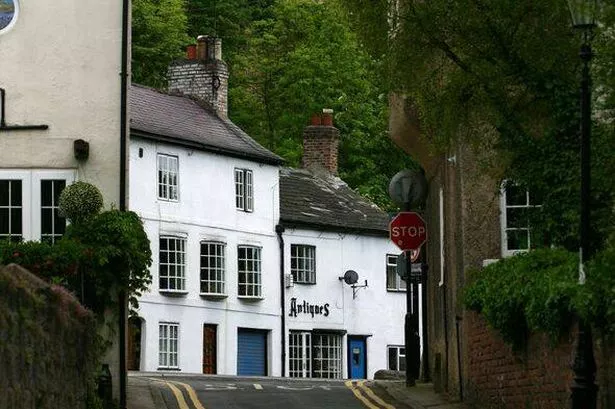A charming UK market town has become the backdrop for a new Christmas movie starring Kiefer Sutherland and Rebel Wilson, and it’s not the first time the town has been used for a festive film
If you’ve ever watched a Christmas film and fantasised about strolling through a charming, festive village with a steaming hot chocolate in hand like one of the characters, this could be your opportunity.
Earlier this year, locals in the stunning Yorkshire town of Knaresborough delighted in celebrity spotting as film crews invaded the area. Sky Original Christmas film Tinsel Town is scheduled to debut on November 28 and will feature Hollywood A-listers Kiefer Sutherland and Rebel Wilson, alongside an outstanding supporting ensemble including Derek Jacobi and Danny Dyer.
According to YorkshireLive, the production process meant residents could savour their seasonal decorations throughout the town for an extended period, with local shopkeeper Di Watson, from Knitting Pretty, commenting: “The town is buzzing with excitement. Knaresborough is a unique, beautiful, friendly town and we’re delighted to be part of this.”
READ MORE: Gorgeous ‘frozen in time’ town with cobblestone streets is oldest in the country
However, this isn’t the first occasion Knaresborough has been selected as the setting for a seasonal film. Television movie A Very British Christmas, which is available to hire on Amazon Prime, was also mainly filmed throughout the town.
Therefore, if you fancy having your own festive escapade, Knaresborough might be the ideal setting. An excellent starting point is the stone-paved Market Square, which is encircled by independent boutiques and welcoming pubs.
The regular market operates on Wednesdays, and on December 6 and 7, there will be a Christmas market featuring seasonal food vendors, handcrafted goods, and much more. Nearby, the Green Dragon Yard, a recent filming location, will be adorned with festive decorations.
This charming historic square boasts a vintage shop and an eccentric tearoom. The crew were also seen along Castlegate, a winding, narrow street brimming with independent shops, cafes, and other unique spots.
READ MORE: I ditched the UK for the ‘friendliest city in Europe’ once known for its grumpiness
As its name implies, Castlegate leads to the entrance of Knaresborough Castle, once the residence of medieval kings and a courthouse and prison. Although the castle now lies in ruins, a keep still stands, housing a courthouse museum filled with original furniture pieces.
It’s also one of the prime locations to view the town’s most iconic sight, Knaresborough Viaduct, where trains can be seen chugging to and from Harrogate. The viaduct was initially slated for completion in 1848, but it collapsed just before it was finished.
Historical records recount that the sound of falling masonry lasted nearly five minutes.
The viaduct’s collapse sparked local outrage, blamed on substandard materials and workmanship, coupled with two months of heavy rainfall causing the river to swell. Thousands of fish perished due to the high limestone content in the water.
However, the resilient town decided to rebuild the viaduct, and the existing structure has stood since 1851, constructed from robust stone sourced from a nearby quarry.
If you’re on the hunt for a snug spot for a pre-Christmas weekend getaway, look no further than Knaresborough Inn. Perched above the River Nidd and surrounded by landscaped gardens, this inn offers a slightly quirky yet warm atmosphere.
With tastefully decorated rooms and a dining room serving hearty British classics, rooms start from £95 per night for two in November.
Just a stone’s throw away from the train station is The Mitre, a pub renowned for its craft beers and cocktails, and an intriguing menu inspired by Asian street food. It boasts four rooms, including an apartment that can accommodate up to four guests.
A stay in a double room starts at £110 per night in November.
So, if you’re yearning for a retreat that’ll make you feel like you’ve stepped into a Christmas film, grab your cosiest scarf and make your way to Knaresborough this winter. Just a two-and-a-half-hour train ride from London, with a changeover in York, it promises to be the ideal festive setting.
However, we can’t promise you’ll fall head over heels for a charming local shop owner during your visit.
Got a travel story to share? Drop us an email at webtravel@reachplc. com.














